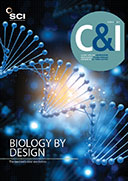
The work is an extension of artificial leaf technology that splits water into hydrogen and oxygen originally developed by Daniel Nocera and colleagues at Harvard University back in 2011. Later, the researchers paired this device with the bacteria Ralstonia eutropha, which extracts CO2 from air and combines it with hydrogen to make liquid fuels. Using a bacteria-friendly alloy of cobalt and phosphorus as the catalyst, they reported that this hybrid microbial/inorganic or ‘bionic leaf’ generates far more biomass and liquid fuel than would be produced by natural photosynthesis. It scrubs 180g of CO2 from air, equivalent to 230,000 litres of air per 1kWh of electricity.
To make fertiliser, the team has now turned to a different bacteria, Xanthobacter, Nocera explained. In this case, the bacteria combine hydrogen and CO2 in the presence of sunlight to make a solid fuel –polyhydroxybutyrate (PHB) bioplastic - that they can then store inside themselves. Usefully, the Xanthobacter has also been engineered to contain a nitrogenase enzyme, Nocera said; once the bacteria are added to the soil, they can use the ‘bottled sunlight’ or stored hydrogen in the bioplastic to drive the fixation of nitrogen in air to make ammonia for fertilising crops.
‘We store the sunlight - and hydrogen - in the form of bioplastic: PHB,’ Nocera said. ‘So once that is in the cell, [the plant] does not need light anymore.’
Xanthobacter was chosen because of its oxygen tolerance. The ammonia produced by this process is not used as fertiliser directly, but is first oxidised by another soil bacteria before being taken up by plants, Nocera pointed out. Fertiliser yields can be increased by adding an inhibitor compound to divert the ammonia away from biomass production.
The group has used the system to grow five crop cycles of radishes. Radishes grown using the fertiliser system were 150% heavier than control crops without the fertiliser, Nocera reported. The next step is to boost throughput so one day farmers in India or sub-Saharan Africa can produce their own fertiliser.
Making fertiliser is just the start. The bionic leaf is a platform for making a wide variety of renewable chemicals, Nocera said, for example by harnessing synthetic biology to design bacteria capable of increased starch production in potatoes.





